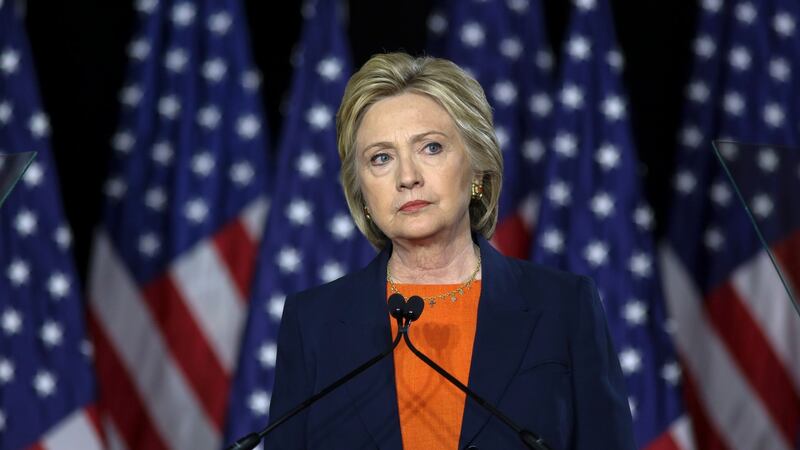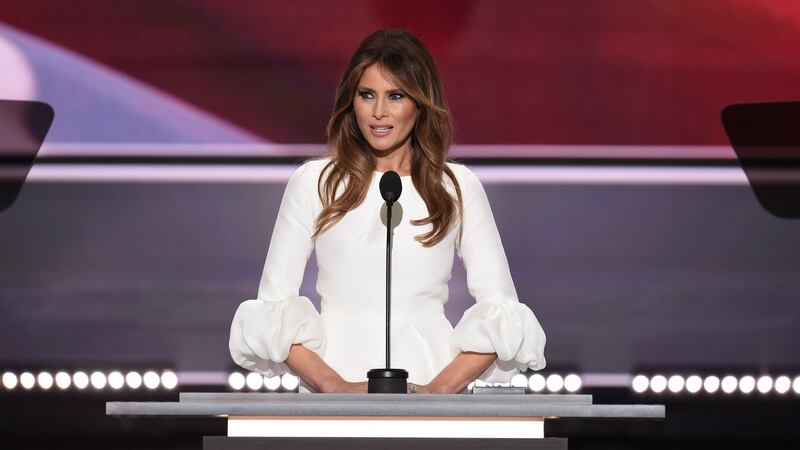In a different campaign or era, it would have been a race-altering moment; in this one, it was barely a scandal. There was Melania Trump, the potential first lady of the United States, posing stark naked in 1990s-era photos published by the New York Post – and then in the next day's edition, canoodling lipstick-lesbian style in bed. Yet the press yawned, her husband's latest outrage overshadowed it, and it only stayed a story because the date of the photos raised questions about the future Mrs Trump's immigration status.
This election was supposed to be a referendum on Hillary Clinton, long a polarising figure because she seemed to embody the cultural transformations of the 1960s – the liberal, feminist, working-mother spouse of the first boomer president.
But in the year of Donald Trump, the religious conservatives who fought many of those transformations find themselves reduced to a hapless rump. The best have retreated to rebuild; the worst have abased themselves before a sybaritic, irreligious presidential nominee.


So in word, deed and his wife’s “artistic” shots, it’s Trump rather than Clinton who has confirmed the full triumph of the sexual revolutions.
I say revolutions, plural, because Trump is a reminder that the 1960s happened in stages, with different figures and worldviews shaping its social shifts. As John Podhoretz wrote in a shrewd column, Trump and Hillary are both children of the 1960s – but of its opposite ends, the Brat Pack era in Trump’s case and the flowering of boomer liberalism in Hillary’s.
Much of what seems strange and reactionary about Trump is tied to what was normal to a certain kind of Sinatra and Mad Men-era man – the casual sexism, the odd mix of sleaziness and formality, even the insult-comic style.
But while that male culture was “conservative” in its exploitative attitudes toward women, it was itself in rebellion against bourgeois norms and Middle-American Christianity. And if Hillary is a (partial, given her complicated marriage) avatar of Gloria Steinem-era feminism, her opponent is an heir of the male revolutionary in whose club Steinem once went undercover: Hugh Hefner.
It was Hefner who fully embodied the male sexual revolt. Today he’s just a sleazy oldster, but in the beginning he was a faux philosopher, preaching a gospel cribbed from bohemia and various Freudian enemies of repression, in which the blessed pursuit of promiscuity was the human birthright. But really a male birthright, for a certain kind of man: The sort of hep cat who loved inviting the ladies back to his pad “for a quiet discussion on Picasso, Nietzsche, jazz, sex.”
That was the ideal, at least. Trump, the thrice-married ubermensch who jokes about Megyn Kelly’s period, is the more usual reality. (So, albeit with more surface class, was the ultimate early-1960s man, the sex-addicted JFK.)
That obvious gulf helps explain why Hefner passed from a phenomenon to a sideshow, while a more feminist vision of liberation became the official ideology of the liberal upper class.
But only gradually and partially. The men’s sexual revolution, in which freedom meant freedom to take your pleasure while women took the pill, is still a potent force, and not only in the halls of Fox News. From Hollywood and college campuses to rock concert backstages and Bill Clinton’s political operation, it has persisted as a pervasive but unspoken philosophy in precincts officially committed to cultural liberalism and sexual equality.
It has also endured by going downmarket in the culture. If you watched The Girls Next Door, the TV show about Hefner's ménage, you noticed that the Playboy mystique was emphatically not a joke in the lower middle class environs that produced his centrefolds and their most adoring fans. Like Trumpism, Hefnerian values have prospered in the blue-collar vacuum created by religion's retreat, community's unravelling.
Then finally, among men who were promised pliant centrefolds and ended up single with only high-speed internet to comfort them, the men’s sexual revolution has curdled into a toxic subculture, resentful of female empowerment in all its forms.
This is where you find Trump’s strongest (and, yes, strangest) fans. He’s become the Daddy Alpha for every alpha-aspiring beta male, whose mix of moral liberation and misogyny keeps the Ring-a-Ding-Ding dream alive.
There aren’t nearly enough of these fans to win him the election. Steinem’s revolution (Clintonian complications and all) should easily beat Hef’s at the ballot box this year.
But the cultural conflict between these two post-revolutionary styles – between frat guys and feminist bluestockings, Gamergaters and the diversity police, alt-right provocateurs and "woke" dudebros, the mouthbreathers who poured hate on the all-female Ghostbusters and the tastemakers who pretended it was good – is likely here to stay. With time and Christianity's further decline, it could eclipse older culture war battles; in the pop culture landscape, it already does.
Ten years ago, liberals pined for a post-religious right, a different culture war.
Be careful what you wish for.
– New York Times service










